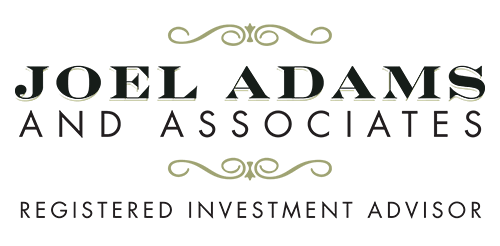Why you should consider giving to charities from your IRA
$27,800: That’s the standard deduction in 2021 for a married couple, both over age 65, filing jointly. Because that number is so high this year, most folks are no longer able to itemize their charitable contributions. If you’re like most people I know, though, you’re likely to give to your favorite charities regardless. Still, it’s nice to take advantage of a little tax benefit when and where possible. The good news? It’s still possible.
If you’re 70½ or older and have an IRA, you can donate your IRA funds directly to a qualified charity. When you do so, you avoid paying federal income taxes on that withdrawal. In some cases, you may avoid paying state income taxes as well. In addition, donating directly to a qualified charity also counts toward your required minimum distribution, or RMD, for the year.
The mechanism to do this is called a qualified charitable distribution, or a QCD, for short. The QCD has been around for over a decade and was made permanent as a result of the PATH Act of 2015. Nevertheless, I still encounter folks who don’t know much about it — and thought I’d give you the scoop.
Here comes some of the fine print: Using QCDs, you can donate up to $100,000 per year directly from an IRA. It may not be used for donor-advised funds, private foundations or charitable gift annuities — and you cannot make a QCD from an “active” SEP IRA, a Simple IRA that is still receiving ongoing employer contributions or from a 401(k) or a 403(b).
The key thing to remember is that the withdrawal may not come to you first. Instead, it must go directly to the qualified charity from your IRA custodian.
We’ve been encouraging our clients to consider qualified charitable distributions from their IRAs for a while now — and, over time, we’ve learned some practical lessons.
For one, your 1099-R tax form will not have a special code indicating the QCD amount. It will just show up as a normal distribution. This means the burden is on you to keep track of your QCDs throughout the year. When you go to file your taxes, follow the Form 1040 instructions for how to enter your QCD amount on your return to ensure that you’re not taxed on those withdrawals.
The last time I wrote a column about the QCD, a reader wrote in to the Citizen Times to say that, while my article was helpful and informative, I may have understated the complexity of correctly reporting the QCD on one’s tax return. And, to that extent, I agree: It requires good recordkeeping on your part and, if you use a tax professional, someone who is already familiar with the QCD.
Another lesson we’ve learned is that sometimes charities get confused about where the donation originated from and may credit the gift as coming from your IRA custodian (e.g., Raymond James or Fidelity) rather than from you. Therefore, I encourage you to give your smaller, local charities and churches — which often don’t have a large administrative staff — a heads-up that the gift is coming from you.
Even if you are still able to itemize your charitable deductions, you may want to utilize the QCD for a portion of your charitable giving. Because IRA distributions count as taxable income, they can potentially have cascading effects on your tax return, including: phasing out the medical expense deduction, increasing your Medicare Part B premium, exposing you to net investment income tax, increasing the amount of Social Security subject to taxation, and increasing the amount of income subject to long-term capital gains tax. Obviously, these are complicated interactions which may best be coordinated with a tax professional.
The tax benefits of a QCD are significant and, therefore, may give many retirees an added incentive to maintain their charitable giving despite this year’s high standard deduction. Remember, though, that a QCD may not be itemized as a charitable deduction. That would be double-dipping. But that’s OK, because you likely aren’t able to itemize those anyway.
The QCD may be an excellent solution for both charities, who need our dollars more than ever, and for retirees who’ve lost their charitable deduction.
Published in Asheville Citizen-Times, Sun. March 7, 2021
Bray Creech, MBA, CPA is a CERTIFIED FINANCIAL PLANNER™ professional with Joel Adams & Associates with securities offered through Raymond James Financial Services, Inc. Member FINRA/SIPC and is located at 545 Merrimon Avenue, Asheville, NC. He can be contacted at 828-251-9700 or bray.creech@raymondjames.com. CPA services are not offered through Raymond James. Investment advisory services offered through Raymond James Financial Services Advisors, Inc. Joel Adams & Associates is not a registered broker/dealer and is independent of Raymond James Financial Services, Inc.
Opinions expressed in the article are those of the author and are not necessarily those of Raymond James. The information contained in this report does not purport to be a complete description of the securities, markets, or developments referred to in this material. The information has been obtained from sources considered to be reliable, but we do not guarantee that the foregoing material is accurate or complete. Investing involves risk and investors may incur a profit or a loss. Past performance may not be indicative of future results. Raymond James does not provide tax or legal services. Please discuss these matters with the appropriate professional.

